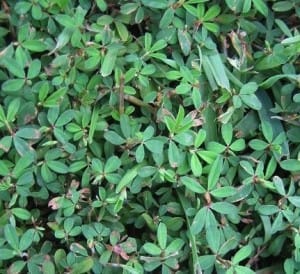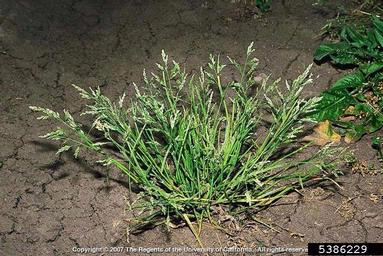Helpful publications from Patrick McCullough, UGA Extension Weed Specialist
Annual Bluegrass Control in Residential Turfgrass
Annual bluegrass (Poa annua L.) is a problematic winter annual weed in residential turf. Compared to most turfgrasses, annual bluegrass has a lighter green color, coarser leaf texture and produces unsightly seedheads.
Contrary to its name, both annual (live for one season) and perennial (live for many seasons) biotypes of annual bluegrass may be found in turf.
This publication describes methods of control for annual bluegrass in residential turfgrass lawns.
To see the entire publication visit this site.
Annual Bluegrass Control in Non-Residential Commercial Turfgrass
Lespedeza Identification and Control in Turfgrass
Common lespedeza is a freely-branched summer annual legume that is a problematic weed in lawns and other turf areas. Common lespedeza, also known as Japanese clover or annual lespedeza, has three smooth, oblong leaflets with parallel veins that are nearly perpendicular to the midvein. As common lespedeza matures, the stems harden and become woody, which is attributed to persistence and competition with turfgrasses in late summer. Flowers are pink to purple and present in the leaf axils. Other lespedeza species may also be found as weeds in turf but common lespedeza is the primary species in Georgia.

This publication describes ways to identify and control lespedeza in turfgrass, including:
To see the entire publication visit this site.
Here are other UGA turf weed control publications:
- Turfgrass Pest Control Recommendations for Professionals
- Lespedeza Identification and Control in Turfgrass
- Identificación y Control de Lespedeza en Céspedes
- Virginia Buttonweed Identification and Control in Turfgrass
- Bermudagrass Control in Southern Lawns
- Control de Bermuda en Céspedes Residenciales del Sudeste de los EEUU
- Controlling Moss and Algae in Turf
- Uso de Herbicidas de Preemergencia para Digitaria y Otras Malezas Anuales de Verano
- Annual Bluegrass Control in Residential Turfgrass
- Annual Bluegrass Control in Residential Turf – Chinese translation
- Annual Bluegrass Control in Non-Residential Commercial Turfgrass in Georgia – Chinese translation
- Control de Poa annua en Céspedes Comerciales no Residenciales de Georgia
- Weed Control in Home Lawns
- Managing Herbicide Resistance in Sod Production
- Managing Herbicide Resistance in Sod Production – Chinese Translation
